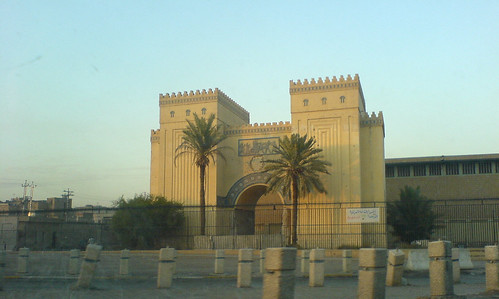 Google will soon begin digitising artefacts and documents at Iraq’s National Museum, chief executive Eric Schmidt said on a visit to Baghdad. Some 14,000 digital images taken from the museum will be freely available online from the beginning of next year.
Google will soon begin digitising artefacts and documents at Iraq’s National Museum, chief executive Eric Schmidt said on a visit to Baghdad. Some 14,000 digital images taken from the museum will be freely available online from the beginning of next year.
The NationalMuseum of Iraq – opened in 1924 with a focus on objects from the Ur excavations and home to an extraordinary collection of Babylonian, Sumerian and Assyrian artefacts as well as rare Islamic texts – suffered damage and looting caused by the Iraqi war and only reopened to visitors February this year. Some 6,000 artefacts were recovered, but at least that many – some over 10,000 years old – remain missing and are probably in private collections abroad.
Google Chief Executive Eric Schmidt stressed the importance of the National Museum and its collection to world culture: “The history of the beginning of -literally- civilization is made right here and is preserved here in this museum. There’s a tremendous amount of information in the Arab world that is neither understood nor broadly available to everyone else.”
Schmidt added that the project fits within Google’s mission to make information available to everyone. The 14,000 images – plus a few surprises – will be available early 2010.
The project involves digitising and electronically cataloguing artefacts at the museum, with the costs being borne jointly by Google and the US State Department.
 When Asked if the Internet search giant was planning any other projects in Iraq, Schmidt replied: “We’ve started with this one, I’m sure we’ll add more.”
When Asked if the Internet search giant was planning any other projects in Iraq, Schmidt replied: “We’ve started with this one, I’m sure we’ll add more.”
The Virtual Museum of Iraq
In the mean while, you can still enjoy ‘The Virtual Museum of Iraq’, an Italian project that showcases more than seventy of the top treasures of the Iraq National Museum in Baghdad. This ‘virtual museum’ – a multimedia exhibit – was developed by Italys Consiglio Nazionale delle Ricerche with support from the Ministry of Foreign Affairs.
The Virtual Museum of Iraq is presented in Italian, English and Arabic and contains images, movies, maps and timelines ordered by culture in seven different halls. Ranging from the prehistoric era to the Islamic, it contains amongst others a 6,000-year-old alabaster figurine of a female from Samarra, winged human-headed bulls, a glazed brick panel from Babylon’s Ishtar Gate and a 3,000-year-old cuneiform tablet. Visit the Virtual Museum of Iraq at virtualmuseumiraq.cnr.it.
If you prefer ‘physicial’ treasures over virtual ones, you should really check out the Mesopotamian Treasures in the British Museum’s upper galleries and make sure not to miss the ‘Iraq’s AncientPast – Rediscovering Ur’s Royal Cemetery’ exhibition at the Penn Museum.